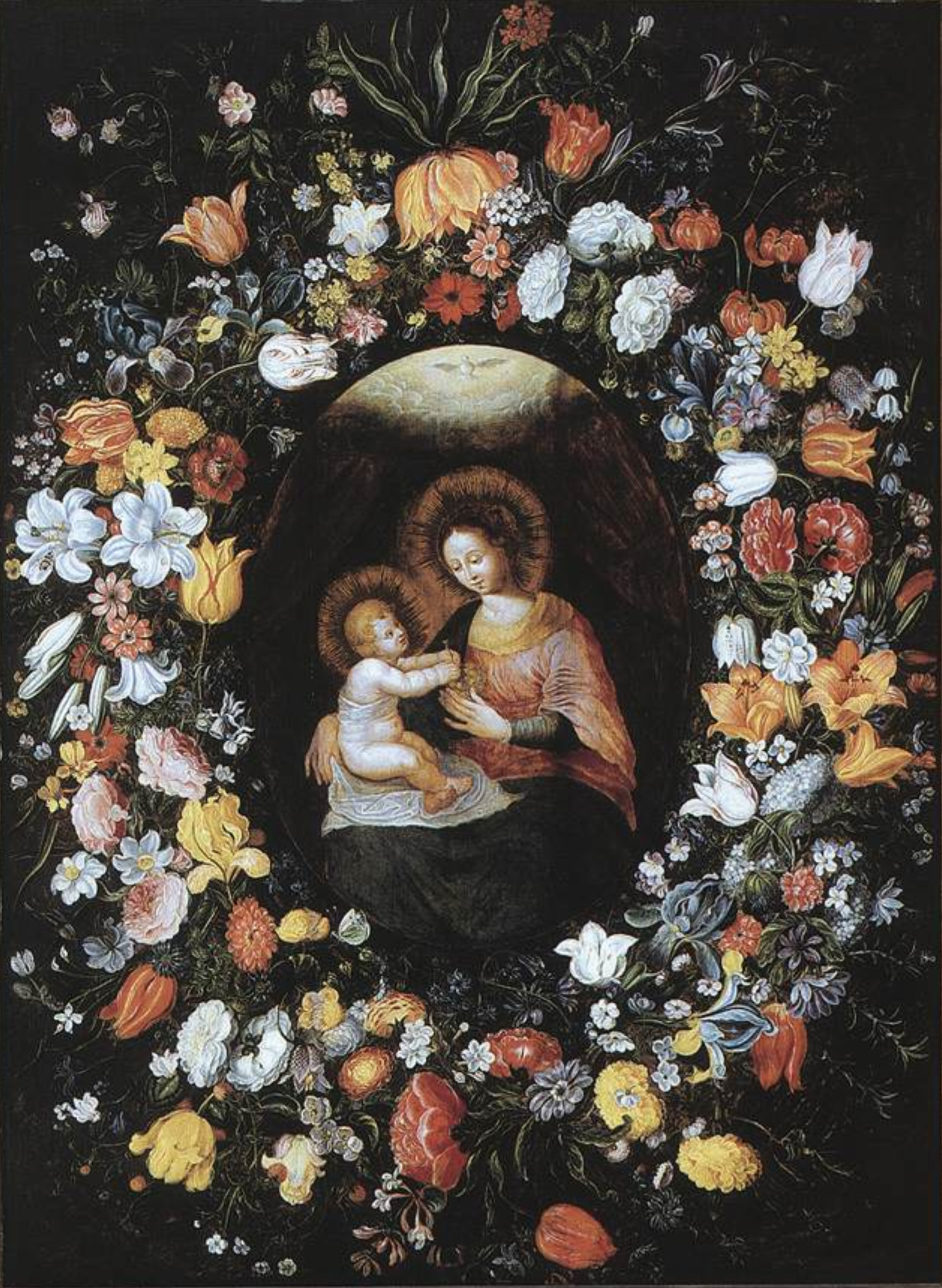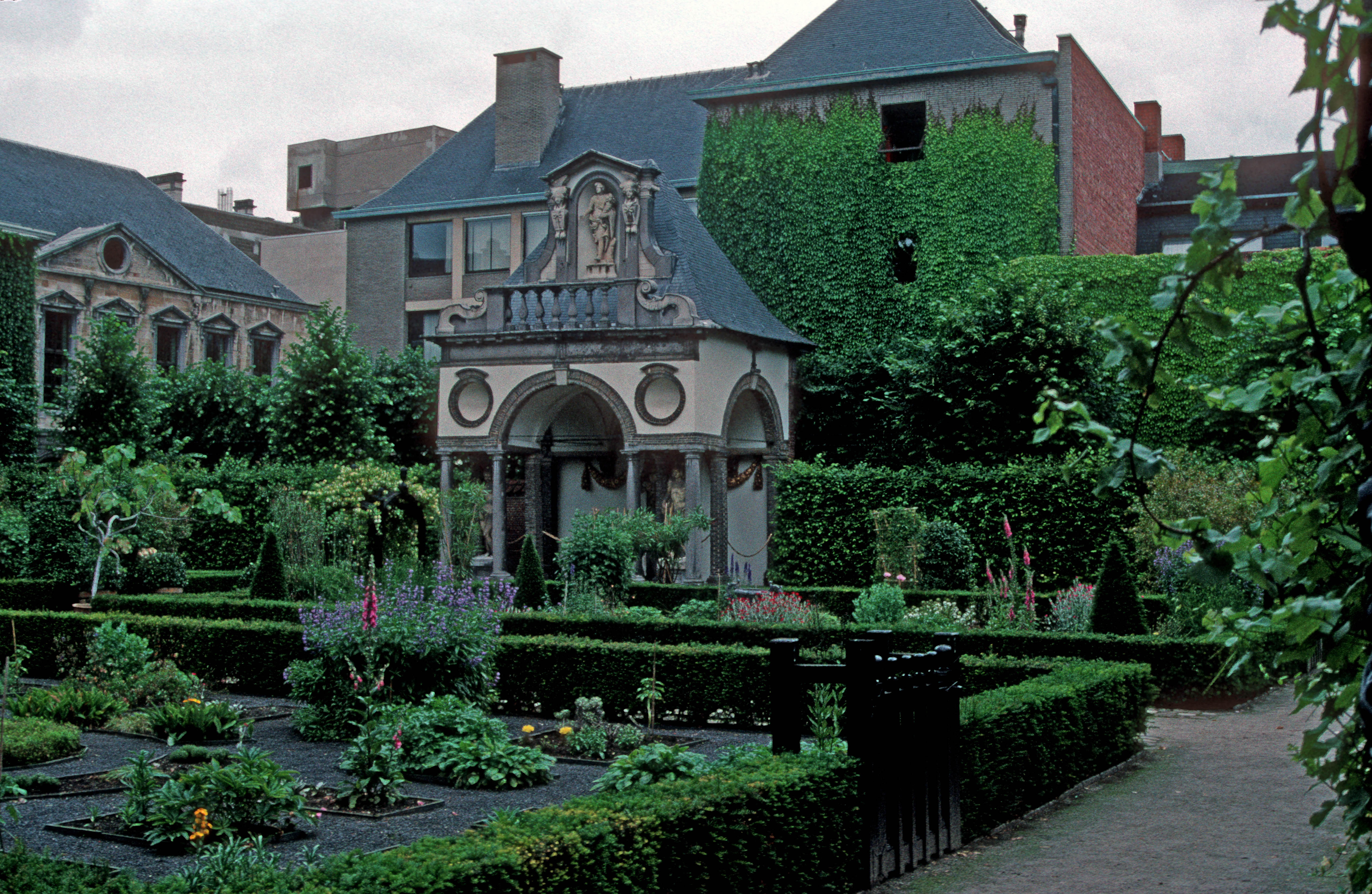|
Ambrosius Brueghel
Ambrosius Brueghel (; baptized 10 August 1617, Antwerp – 9 February 1675) was a Flemish painter from the famous Brueghel family of artists. Less prolific and less well-known than a number of his family members, his oeuvre is not very well understood and is believed to comprise Baroque still lifes, garland paintings as well as landscapes.Hans J. Van Miegroet, "Ambrosius Breughel." Grove Art Online. Oxford Art Online. Oxford University Press. Web. 9 March 2017 Life Ambrosius Brueghel was born in Antwerp as the son of Jan Brueghel the Elder and Catharina van Marienburg. His father was one of the leading painters in Antwerp and the son of the famous Renaissance painter Pieter Brueghel the Elder.Frans Jozef Peter Van den Branden, ''Geschiedenis der Antwerpsche schilderschool'', Antwerpen, 1883, pp. 459–460 His older (half)-brother Jan Brueghel the Younger was also a painter and took over the workshop of their father on his death in 1625. His sister Anna married the prominent ... [...More Info...] [...Related Items...] OR: [Wikipedia] [Google] [Baidu] |
Ambrosius Brueghel - Holy Virgin And Child - WGA03547
Ambrosius or Ambrosios (a Latin adjective derived from the Ancient Greek word ἀμβρόσιος, ''ambrosios'' "divine, immortal") may refer to: Given name: *Ambrosius Alexandrinus, a Latinization of the name of Ambrose of Alexandria (before 212–c. 250), Egyptian theologian and saint *Saint Ambrose (Aurelius Ambrosius) (c. 340–397), bishop of Milan *Ambrosius Aurelianus, fifth-century war leader of the Romano-British *Ambrosius of Georgia (1861–1927), Catholicos Patriarch of All Georgia *Ambrosius of Optino * Ambrosius, Metropolitan of Helsinki * Ambrosius, Metropolitan of Moscow *Ambrosius (Hussite), priest, leader of Hussite peasants *Ambrosius Beber (fl. 1610–1620), German composer *Ambrosius Benson (c. 1495/1500 – 1550), Italian painter *Ambrosius Blarer (1492–1564), Swiss reformer *Ambrosius Bosschaert (1573–1621), Dutch painter *Ambrosius Bosschaert II (1609–1645), Dutch painter, son of the above * Ambrosius Bogbinder, mayor of Copenhagen (1529–36) *Ambrosi ... [...More Info...] [...Related Items...] OR: [Wikipedia] [Google] [Baidu] |
Vanitas
A ''vanitas'' (Latin for 'vanity') is a symbolic work of art showing the transience of life, the futility of pleasure, and the certainty of death, often contrasting symbols of wealth and symbols of ephemerality and death. Best-known are ''vanitas'' still lifes, a common genre in the Low Countries of the 16th and 17th centuries; they have also been created at other times and in other media and genres. Etymology The Latin noun ''vanitas'' (from the Latin adjective ''vanus'' 'empty') means " emptiness", "futility", or "worthlessness", the traditional Christian view being that earthly goods and pursuits are transient and worthless. It alludes to Ecclesiastes , where ''vanitas'' translates the Hebrew word ''hevel'', which also includes the concept of transitoriness. Themes Vanitas themes were common in medieval funerary art, with most surviving examples in sculpture. By the 15th century, these could be extremely morbid and explicit, reflecting an increased obsession wit ... [...More Info...] [...Related Items...] OR: [Wikipedia] [Google] [Baidu] |
1675 Deaths
Events January–March * January 5 – Franco-Dutch War – Battle of Turckheim: The French defeat Austria and Brandenburg. * January 29 – John Sassamon, an English-educated Native American Christian, dies at Assawampsett Pond, an event which will trigger a year-long war between the English American colonists of New England, and the Algonquian Native American tribes. * February 4 – The Italian opera ''La divisione del mondo'', by Giovanni Legrenzi, is performed for the first time, premiering in Venice at the Teatro San Luca. The new opera, telling the story of the "division of the world" after the battle between the Gods of Olympus and the Titans, becomes known for its elaborate and expensive sets, machinery, and special effects and is revived 325 years later in the year 2000. * February 6 – Nicolò Sagredo is elected as the new Doge of Venice and leader of the Venetian Republic, replacing Domenico II Contarini, who had died 10 days ... [...More Info...] [...Related Items...] OR: [Wikipedia] [Google] [Baidu] |
1617 Births
Events January–June * February 27 – The Treaty of Stolbovo ends the Ingrian War between Sweden and Russia. Sweden gains Ingria and Kexholm. * April 14 – Second Battle of Playa Honda: The Spanish navy defeats a Dutch fleet in the Philippines. * April 19 – The town of Uusikaupunki ( sv, Nystad, lit. "New Town") was founded by King Gustavus Adolphus of Sweden. * April 24 – Encouraged by Charles d'Albert, seventeen-year-old Louis XIII, king of France, forces his mother Marie de Medici, who has held ''de facto'' power, into retirement and has her favourite, Concino Concini, assassinated. * June 5 – Ferdinand II, Archduke of Inner Austria, is elected King of Bohemia. Ferdinand's forceful Catholic counter-reformation causes great unrest, amongst the Protestants and moderates in Bohemia. July–December * September 1 – The weighing ceremony of Jahangir is described by the first English ambassador to the Mughal court, Sir Thomas Ro ... [...More Info...] [...Related Items...] OR: [Wikipedia] [Google] [Baidu] |
Artists From Antwerp
An artist is a person engaged in an activity related to creating art, practicing the arts, or demonstrating an art. The common usage in both everyday speech and academic discourse refers to a practitioner in the visual arts only. However, the term is also often used in the entertainment business, especially in a business context, for musicians and other performers (although less often for actors). "Artiste" (French for artist) is a variant used in English in this context, but this use has become rare. Use of the term "artist" to describe writers is valid, but less common, and mostly restricted to contexts like used in criticism. Dictionary definitions The ''Oxford English Dictionary'' defines the older broad meanings of the term "artist": * A learned person or Master of Arts. * One who pursues a practical science, traditionally medicine, astrology, alchemy, chemistry. * A follower of a pursuit in which skill comes by study or practice. * A follower of a manual art, such as ... [...More Info...] [...Related Items...] OR: [Wikipedia] [Google] [Baidu] |
Flemish Landscape Painters
Flemish (''Vlaams'') is a Low Franconian dialect cluster of the Dutch language. It is sometimes referred to as Flemish Dutch (), Belgian Dutch ( ), or Southern Dutch (). Flemish is native to Flanders, a historical region in northern Belgium; it is spoken by Flemings, the dominant ethnic group of the region. Outside of Flanders, it is also spoken to some extent in French Flanders and the Dutch Zeelandic Flanders. Terminology The term ''Flemish'' itself has become ambiguous. Nowadays, it is used in at least five ways, depending on the context. These include: # An indication of Dutch written and spoken in Flanders including the Dutch standard language as well as the non-standardized dialects, including intermediate forms between vernacular dialects and the standard. Some linguists avoid the term ''Flemish'' in this context and prefer the designation ''Belgian-Dutch'' or ''South-Dutch'' # A synonym for the so-called intermediate language in Flanders region, the # An indic ... [...More Info...] [...Related Items...] OR: [Wikipedia] [Google] [Baidu] |
Flemish Baroque Painters
Flemish (''Vlaams'') is a Low Franconian dialect cluster of the Dutch language. It is sometimes referred to as Flemish Dutch (), Belgian Dutch ( ), or Southern Dutch (). Flemish is native to Flanders, a historical region in northern Belgium; it is spoken by Flemings, the dominant ethnic group of the region. Outside of Flanders, it is also spoken to some extent in French Flanders and the Dutch Zeelandic Flanders. Terminology The term ''Flemish'' itself has become ambiguous. Nowadays, it is used in at least five ways, depending on the context. These include: # An indication of Dutch written and spoken in Flanders including the Dutch standard language as well as the non-standardized dialects, including intermediate forms between vernacular dialects and the standard. Some linguists avoid the term ''Flemish'' in this context and prefer the designation ''Belgian-Dutch'' or ''South-Dutch'' # A synonym for the so-called intermediate language in Flanders region, the # An indi ... [...More Info...] [...Related Items...] OR: [Wikipedia] [Google] [Baidu] |
Habsburg
The House of Habsburg (), alternatively spelled Hapsburg in Englishgerman: Haus Habsburg, ; es, Casa de Habsburgo; hu, Habsburg család, it, Casa di Asburgo, nl, Huis van Habsburg, pl, dom Habsburgów, pt, Casa de Habsburgo, la, Domus Habsburg, french: Maison des Habsbourg and also known as the House of Austriagerman: link=no, Haus Österreich, ; es, link=no, Casa de Austria; nl, Huis van Oostenrijk, pl, dom Austrii, la, Domus Austriæ, french: Maison d'Autriche; hu, Ausztria Háza; it, Casa d'Austria; pt, Casa da Áustria is one of the most prominent and important dynasties in European history. The house takes its name from Habsburg Castle, a fortress built in the 1020s in present-day Switzerland by Radbot of Klettgau, who named his fortress Habsburg. His grandson Otto II was the first to take the fortress name as his own, adding "Count of Habsburg" to his title. In 1273, Count Radbot's seventh-generation descendant Rudolph of Habsburg was elected King of the R ... [...More Info...] [...Related Items...] OR: [Wikipedia] [Google] [Baidu] |
Mary (mother Of Jesus)
Mary; arc, ܡܪܝܡ, translit=Mariam; ar, مريم, translit=Maryam; grc, Μαρία, translit=María; la, Maria; cop, Ⲙⲁⲣⲓⲁ, translit=Maria was a first-century Jews, Jewish woman of Nazareth, the wife of Saint Joseph, Joseph and the mother of Jesus. She is a central figure of Christianity, venerated under titles of Mary, various titles such as virgin or queen, many of them mentioned in the Litany of Loreto. The Eastern Orthodox Church, Eastern and Oriental Orthodox, Church of the East, Catholic, Anglican, and Lutheran churches believe that Mary, as mother of Jesus, is the Theotokos, Mother of God. Other Protestant views on Mary vary, with some holding her to have considerably lesser status. The New Testament of the Holy Bible, Bible provides the earliest documented references to Mary by name, mainly in the canonical Gospels. She is described as a young virgin who was chosen by God in Christianity, God to annunciation, conceive Jesus through the Holy Spirit ... [...More Info...] [...Related Items...] OR: [Wikipedia] [Google] [Baidu] |
Daniel Seghers
Daniël Seghers or Daniel Seghers (3 December 1590 – 2 November 1661) was a Flemish Jesuit brother and painter who specialized in flower still lifes. He is particularly well known for his contributions to the genre of flower garland painting.Irene Haberland, "Seghers, Daniel," ''Grove Art Online''. Oxford University Press, ccessed 15 February 2015 His paintings were collected enthusiastically by aristocratic patrons and he had numerous followers and imitators.John Rupert Martin, "A Portrait of Rubens by Daniel Seghers," ''Record of the Art Museum, Princeton University'', vol. 17 (1958), pp. 2–20. Life Seghers was born in Antwerp. He moved with his mother to the Dutch Republic, probably Utrecht around 1601, following the death of his father Pieter and the conversion of his mother to Calvinism. [...More Info...] [...Related Items...] OR: [Wikipedia] [Google] [Baidu] |
Peter Paul Rubens
Sir Peter Paul Rubens (; ; 28 June 1577 – 30 May 1640) was a Flemish artist and diplomat from the Duchy of Brabant in the Southern Netherlands (modern-day Belgium). He is considered the most influential artist of the Flemish Baroque tradition. Rubens's highly charged compositions reference erudite aspects of classical and Christian history. His unique and immensely popular Baroque style emphasized movement, colour, and sensuality, which followed the immediate, dramatic artistic style promoted in the Counter-Reformation. Rubens was a painter producing altarpieces, portraits, landscapes, and history paintings of mythological and allegorical subjects. He was also a prolific designer of cartoons for the Flemish tapestry workshops and of frontispieces for the publishers in Antwerp. In addition to running a large workshop in Antwerp that produced paintings popular with nobility and art collectors throughout Europe, Rubens was a classically educated humanist scholar and diplom ... [...More Info...] [...Related Items...] OR: [Wikipedia] [Google] [Baidu] |




_(cropped).jpg)
